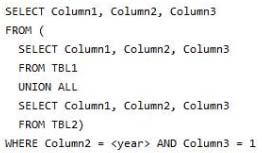

Note: This question is part of a series of questions that use the same or similar answer choices. As answer choice may be correct for more than one question in the series. Each question is independent of the other questions in this series.
Information and details provided in a question apply only to that question.
You have a Microsoft SQL Server database named DB1 that contains the following tables:
Users frequently run the following query. The users report that the query takes a long time to return results.
You need to minimize the amount of time required for the query to return data.
alex_
Highly Voted 5 years, 3 months agoHoglet
4 years, 11 months agostm22
Most Recent 4 years, 10 months ago